A Beginner’s Guide for Paraeducators
So, you are thinking about being a paraeducator? Do you think you have what it takes? I hope my beginner's guide for paraeducators, is your go-to handbook for you to begin your paraeducator career path and you can use it as a step-by-step guide to your para success. But sometimes nothing can really prepare you for your first day as a paraeducator.
My First Day as a Paraeducator
Recently graduated with my associate's degree in elementary education in Florida, moved to Illinois, and received my paraprofessional license from ISBE (Illinois State Board of Education). I was ready for work. A therapeutic day school for autism hired me. I took a 1:1 middle school position even though elementary was my interest. It's my first day and I meet my student. All of sudden this kid just takes off. My anxiety starts to rise. I start to question the position I had just taken. As the day goes on my student starts touching himself to the point of erection...I did not get trained for this …
Looking around for help on how to handle this particular situation with this particular student from the other program assistants (that's what his school titled us) …Everyone is busy…the teacher and 2 assistants are helping another assistant get freed from a hair pull. Three assistants are holding a child in crisis prevention hold while he is screaming and Yellow Submarine by The Beatles is playing in the background to calm him down. I go back to my situation, I'm nervous, questioning what I'm doing here, this kid just grabbed my hand to bring it towards himself, what is he going to do? What am I going to do?
So again, I ask you, do you think you have what it takes? Let's dig in to find out!
What is a Paraeducator?
A paraeducator has credentials as an educational worker who does not have a license to teach, but performs many duties both individually with students, perhaps as a 1:1 or in small groups, and mostly in the classroom as a classroom para to serve as an extra pair of eyes and hands to teachers. Paraeducators may also provide instructional support in the computer lab, and library/media center, conduct parental involvement activities or serve as translators.
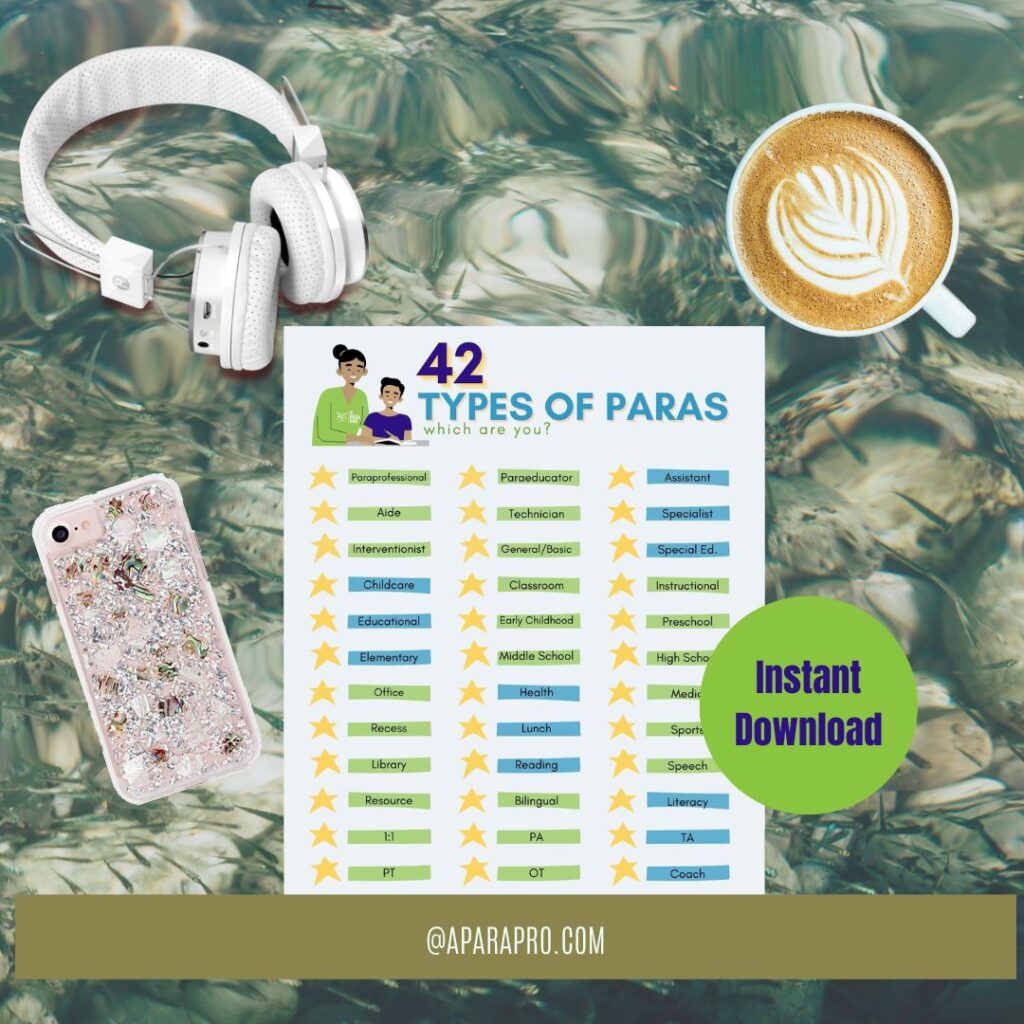
Paraprofessionals, also known as teacher aides, teaching assistants, ed-techs, classroom assistants, instructional aides, para-educators, paras, and my personal favorite para-pros provide instructional or related support to students under the direction and supervision of a certified teacher. But no matter what you call them there is one thing for sure they are essential for a successful school system.
Why are Paraeducators Essential in the Classroom?
- Paraeducators help teachers save valuable class time by working with students that require more time and/or additional instruction to understand and keep up with their peers. Without help, the students may fall behind or place in the wrong special education setting.
- Paras serve as a bridge between two learning environments (general education and special education) helping students learn valuable social skills.
- Paraeducators help with disabled students’ physical needs, like feeding, cleaning, or moving those who can’t do it themselves.
- Paras also help by working with students with any behavioral problems.
What do Paraeducators do?
- Instructional Support: Paraprofessional may work with a small group of students who need extra help understanding a math or reading concept, while the teacher works with students who are ready to move on to learning the next concept.
- Language Support: Bilingual paraprofessionals provide language support to English language learners and can help create learning materials in another language.
- Behavioral Support: Paraprofessionals often work with students who struggle with expectations for classroom behavior. They have to take notes and document behavior while implementing the BIP (Behavior Intervention Plan).
- Physical Support– Some paraprofessionals work with children who have physical disabilities. Paraprofessionals can help with self-care, communication, mobility, and any other physical goals on the IEP (Individualized Education Plan).
- Medical Support– Paraprofessionals collaborate with the school nurse to work with students who need medical support.
What are the Pros and Cons of a Paraeducator?
What's a beginner's guide without an infographic, so of course my beginner's guide for paraeducators had to include one. Enjoy!
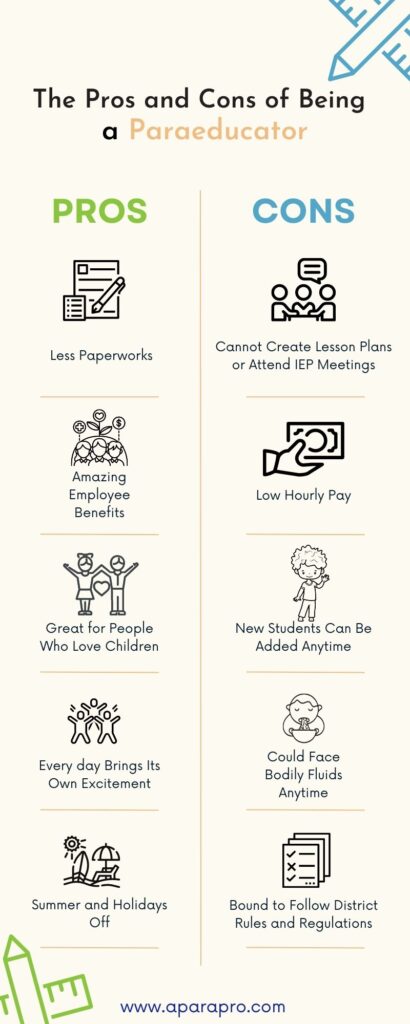
Beginner's Guide for Paraeducators: How to get started
Step 1: Know why you want to be a paraeducator. This career path is not for everyone. Some of the children paras work with do things that may offend you, physically hurt you, and send you crying home or to the urgent care, and fall in love with them only to let them go. This is not for the faint of heart. Therefore, in times like these, you need to remember your why.
Step 2: Know the rules. According to the U.S. Department of Education, you only need a high school diploma or GED equivalent to be a paraprofessional. However, Title 1 school paraeducators are required to have 60 accredited college credits, and a 2-year degree or higher or take the required paraeducator examination. Schools that receive supplemental federal funds for students from low-income families are categorized under the Title 1 program. You can read more about Title 1 School Paraprofessionals here.
Step 3: Visit your State's Department of Education. Review any prerequisites your state requires for employment. Remember that little search bar is your friend, input paraeducator license and go from them. For example, I had to submit a copy of my identification, my high school diploma, and my degree to the Illinois State Board of Education. I submitted mine through email. You may mail or fax as well. You also may have to pay an application fee. I had to pay a reinstatement fee of $20 for my credentials when I went back to work after taking a few years off to stay home with my little ones. Again, please check the requirements of your state's Department of Education! It may take 2-6 weeks for you to receive your credentials.
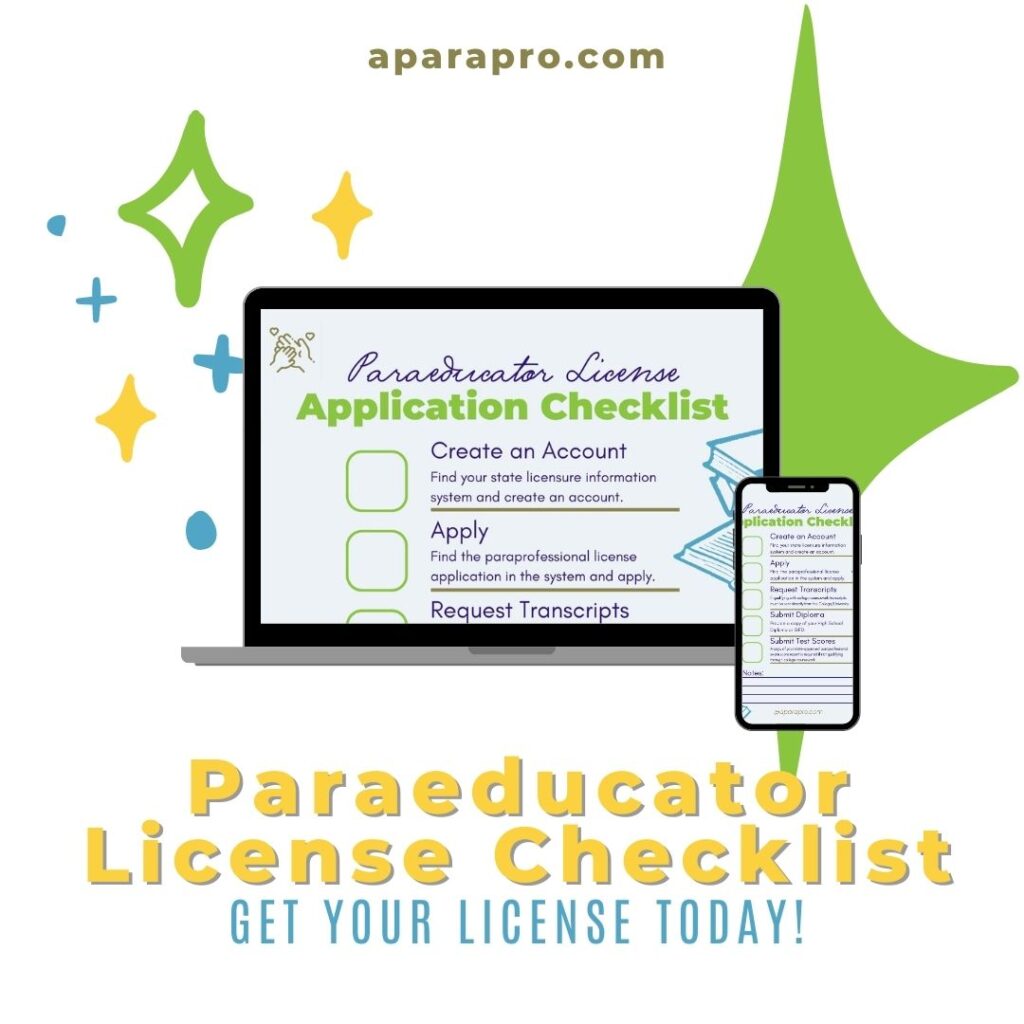
Step 4: Start the employment process. Build your Resume and Cover letter, contact References, and request a letter of recommendation while you wait for your license. Research the school districts near you by visiting their websites and clicking on their employment tab. See what is available. Consider your preferences. Do you want elementary, middle school, or high school? Are you bilingual? Do you want to be a 1:1, media aide, or somewhere in between? See what is available and excites you!
Step 5: Now it's time to apply. You have state approval, and you have completed your resume, references, and cover letter. Apply, Apply, Apply. And don't forget to stay organized.
Step 6: While you are waiting for your call back research the interview question you may be asking and how to answer them. As well as questions to ask them. Another good thing to do is research the district itself and its core values.
Step 7: You got the interview! You are ready, you dress to impress, you show up on time and you sell them on hiring you.
Step 8: You got the para position! Yay!! Now follow the district's requirements to start employment. They may request documentation like tax forms, physicals, vaccinations, or any additional training like CPR or CPI (Crisis Prevention Intervention).
Step 9: Your first day of school! You're nervous and jittery…but it's OK. You know why you are doing this. So, you take a deep breath and remember to be likable and make connections with your teacher, your student/s, and any other adults in the classroom.
Step 10: Never stop learning! Take advantage of professional development days and any other opportunity your district offers to stay current on the latest procedures and techniques as a paraeducator.
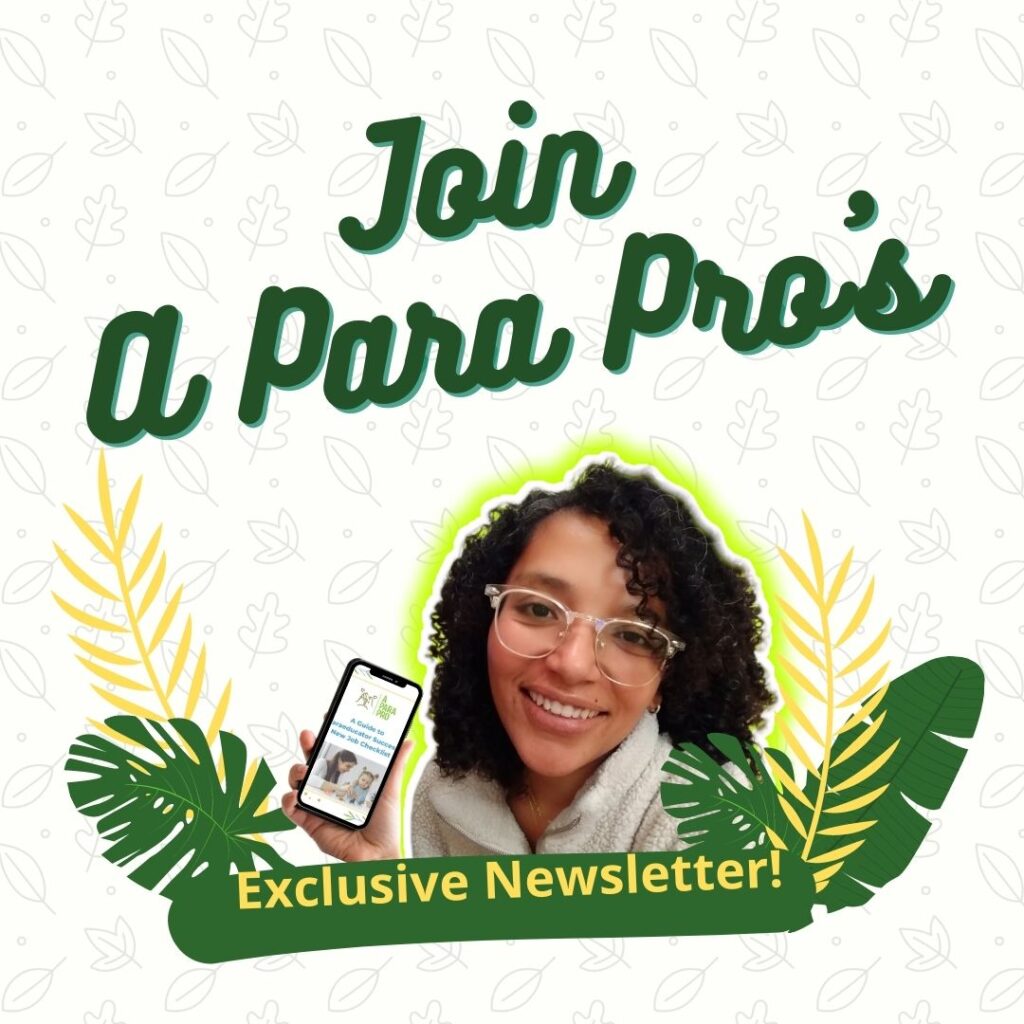
Beginner's Guide for Paraeducators: Tips for Success
- Be a Good Communicator – paraprofessionals will need to communicate with students, teachers, administrators, and possibly parents/guardians, the ability to communicate clearly and articulately is a major part of the job. Especially if you are a bilingual aide. So, listening skills are key! Talk to the teacher you assist with your concerns or any issues you may have. Students CAN sense negative feelings. If you do not address them, it can affect your ability to help the students and may damage the way the student and teacher relationship.
- Be a People Person – you MUST like kids unconditionally and be a team player. Paraprofessionals are part of a team of teachers, administrators, and support staff where communication and collaboration are essential. Know how to work as part of a team to help educate students.
- Be Calm, Patient, and Flexible – The best paraprofessionals remain calm and patient both in crisis and in routine. Remain patient and understanding when having to work at the pace of the student you are helping. Be flexible and ready to shift gears when a crisis arises.
- Be Aware – Give the student/s their independence. Know when to back off and jump in. Give students the opportunity to work independently to help them build confidence in their skills. Instead of guiding the student to the answers, a truly great paraprofessional knows how to remain present or step back while the student figures out the answer for him or herself and intervenes when something is not quite right.
- Be Organized – A chaotic environment distracts everyone from the tasks at hand. As a paraprofessional, you should have a good sense of organization when it comes to record-keeping and classroom behavior. That means keeping track of assignments and bathroom breaks, having the right class materials at the right time, and much more. Remember to document everything and keep confidential information private.
- Be Positive – You recognize the opportunities and are willing to try new things. You can do this! It is Possible!
Beginner's Guide for Paraeducators FAQ
Can paraprofessionals be left alone with student/s?
When I first started as a para I was not allowed to be left alone. There had to be at least two paras if the teacher left the classroom. Also, it makes it easier to handle behaviors if any arise. You can work 1:1 or in small groups under a teacher's supervision. No, the teacher does not have to be present, if you step out of the classroom to work in the hallway or in the media center. But you can't just do your own thing without running it by the teacher first.
Can paraprofessionals be substitute teachers?
Only if the licensed paraprofessional has a bachelor's degree and applies for the license.
Do paraprofessional certifications expire?
Paraprofessional licenses are only valid for 5 years and renewed with the payment of registration fees.
How much do Paraprofessionals get paid? What is their salary and/or hourly rate?
When first entering the field, a paraeducator can expect to make an estimated $17,180 per year. Paraeducators can expect to make an average of $23,640 per year, according to statistics from the United States Department of Labor’s Bureau of Labor Statistics. Salary levels will vary widely based on school district, type of school, education, experience, and location. The average pay ranges from $12-$17 per hour for about 35-38 hours per week.
Do paraprofessionals get paid in the summer?
Most school districts pay their paraprofessionals hourly. They do not get paid during the summer months when school is not in session. Instead, they are hired on a 10-month contract basis each school year and paid only for the months when students are in class. You should check with your HR Department since each school district is different.
Can paraprofessionals get unemployment in the summer?
Paraprofessionals, teachers, and other school employees do not collect unemployment benefits during summer vacation because everyone knows that it is an ordinary part of their work. However, union representatives are always negotiating on your behalf. Recently my district just gave approval for summer unemployment. So, check with yours.
To Conclude this Beginner's Guide for Paraeducators
There will always be a need for qualified teaching professionals to assist in classrooms and work with students. According to the Bureau of Labor Statistics, paraprofessional jobs are projected to grow 5 percent from 2021 to 2031. Working as a paraprofessional may also provide a firm foundation to continue your career into a four-year program for elementary or secondary education, resulting in eventually becoming a licensed teacher, should you choose so.
If you are still reading you have a genuine interest in a paraprofessional position or you really want to know that I took my hand back, stood up, and booked it out of that classroom as fast as my little feet could carry me.
Ha-Ha!! Just kidding! if that were true, I wouldn't be writing this beginner's guide. Instead, I applied Tips #3 and #6. Please share in the comments what you wouldn't have done or any supportive tips we can apply as ParaPros!
PIN FOR LATER
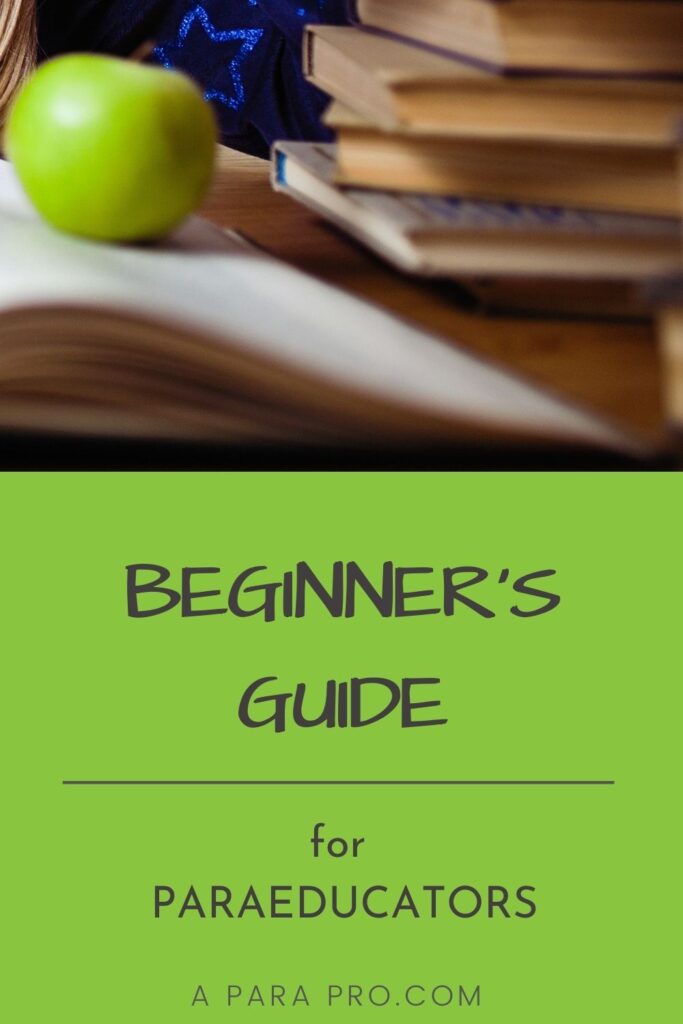
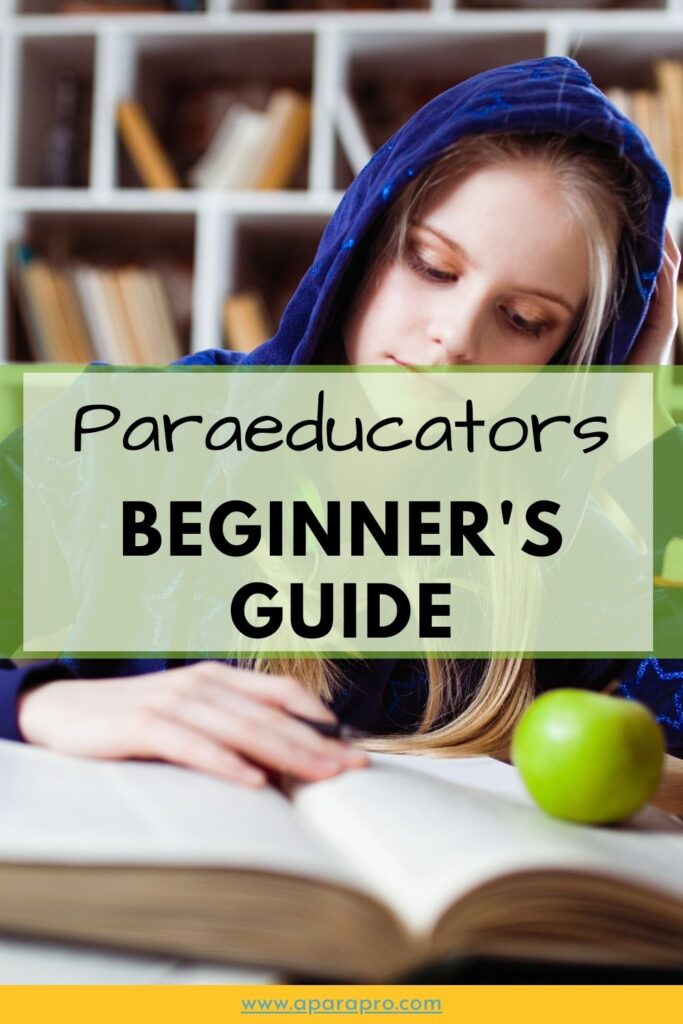
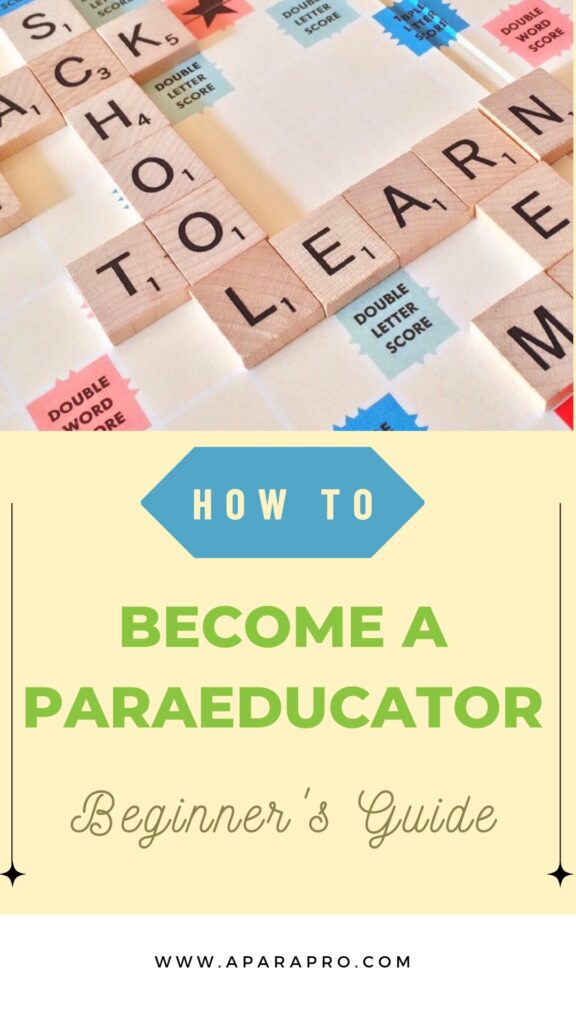

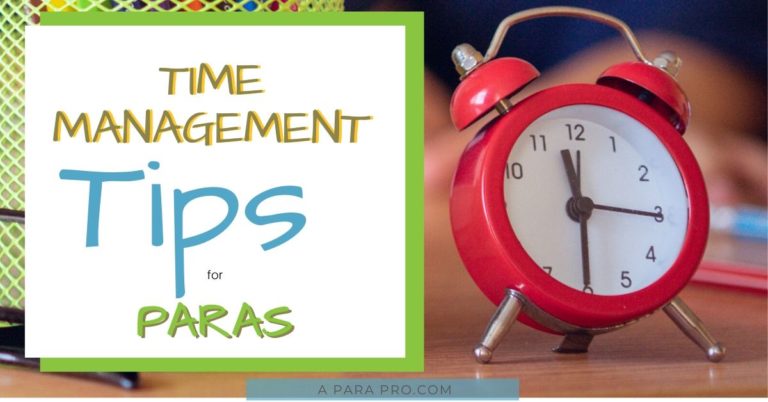
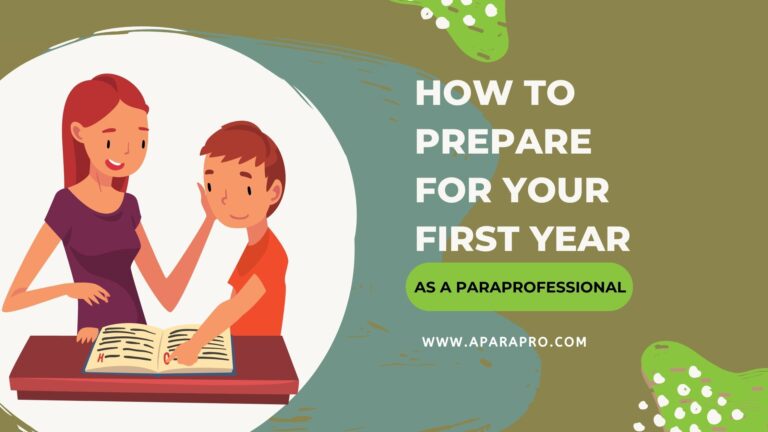

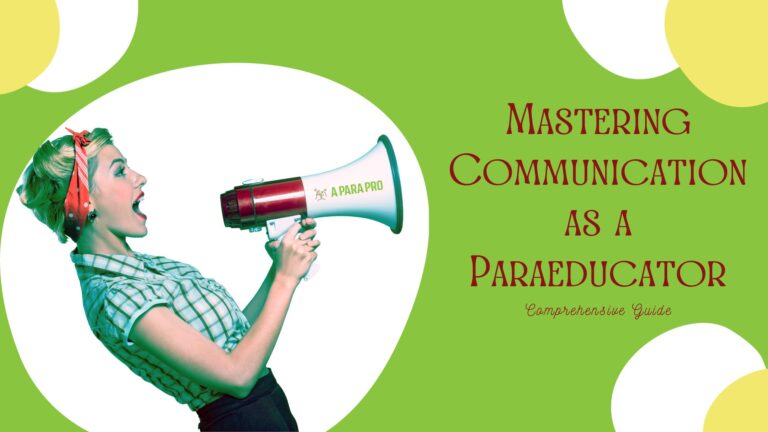

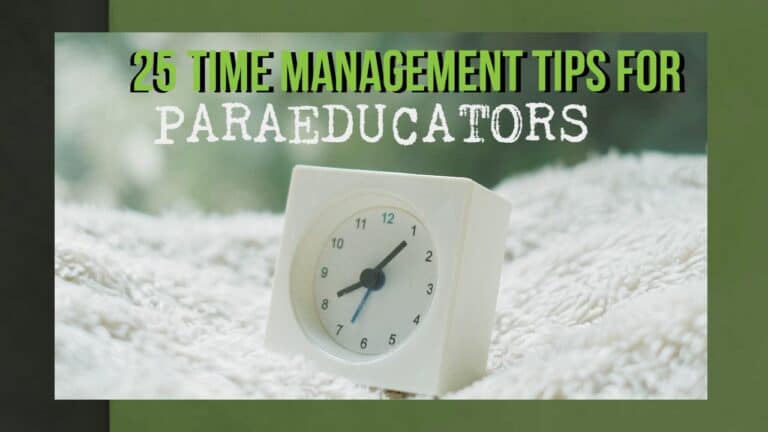
Very informative
Thank you for creating/sharing your website. I believe this will be very helpful to new and current para’s. Keep up the great work and I’m looking forward to reading more info. I will share this link with others (para’s).
Thank you so much Karen for your encouraging comment. I will continue to bring awareness to paras and please feel free to share anything you’d like to read more about. I am so grateful to have you as a reader and I truly appreciate you for sharing this resource.
I am a special educator in Oklahoma. Do you know, or can you refer me to the specific law that states paras can NOT pull students (special or gen Ed) from their regular Ed classes to work with them? As in, the para has a classroom for helping special and gen Ed students with their work. No certified teacher is present in the room when the para is working with students. And some students are not on IEPs or 504s.
Hi Sheri, Thanks for reaching out. According to Title 1, Section 119(g) (2) paras can work 1:1 with a student or a small group and pull them out as long as it has been scheduled by the student’s teacher. Paraeducators are not allowed to teach new materials or plan the instruction. The teacher does this. We just help implement it. I hope this helps. Here is the Oklahoma State Paraprofessional FAQ